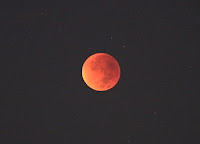Astrologers have been answering this question in the affirmative since time immemorial. It’s true that astrology has been discredited since a few centuries ago, to the point that another name had to be found for the science dedicated to the study of the stars (astronomy = laws of the stars). Despite which, in this supposedly scientific age, the mainstream media dedicate significant space to horoscopes and other astrological products.
Sometimes the influence of the moon has been confirmed. Since ancient times it was observed that the tides are related to the position of the moon in the sky, although it was not known how this influence could take place. To support the theory of Copernicus against that of Ptolemy, Galileo formulated a theory, according to which the tides are not due to the attraction of the moon, but to the translational movement of the Earth around the sun. In this case Galileo was wrong, because the influence of the moon is real, although it was not explained until Isaac Newton formulated the theory of universal gravitation.
In other cases, that influence has not
been confirmed. Some health workers fuel the idea that the moon influences man
with two popular claims:
- The
cycle of the moon influences a woman's menstrual period, which usually
lasts about 28 days. The similarity of both cycles cannot be a
coincidence.
- The
cycle of the moon influences births, which are usually grouped around the
full moon.
Is there any truth to these two
statements? Let's look at the first:
- First
observation: the cycle of the lunar phases does
not last 28 days, but about 29 and a half days. See this
previous blog post.
- Second
observation: the length of a woman's menstrual
period is statistical. The value usually given (28 days) is a mean or a median.
Different women have different periods. The period of a given woman is
also subject to variations. The cycle of the moon, on the other hand, is
always the same. If their relation were cause and effect, the statistical
variation of the menstrual cycle should be much smaller.
- Third
observation: the menstrual period in gorillas is
between 30 and 40 days. In chimpanzees, it is 35 or 36 days. If the moon
influenced the menstrual period of the human species, it should also
influence that of the primates closest to us.
The conclusion is obvious: the similarity between the cycle of the moon and the menstrual period of women does not indicate a cause-effect relation, but a coincidence.
Now let's look at the second statement:
In a
study conducted in the United States on the dates of 70 million births, the
following conclusions were reached:
- There
is no statistically significant relation between the number of births and
the phase of the moon.
- The
number of births ranged from about 12,000 a day on weekdays to about 9,500
a day on weekends. The reason for this difference is obvious: fewer
caesarean sections and fewer induced births are performed on weekends,
because fewer doctors are working.
- There
were more births in summer and fewer in winter. Researchers consider this a
historical relic (in the past, winter births were more dangerous).
These results agree with those of another
study carried out in France on 38.7 million births, which, although it
found a slight increase in the number of births on day 15 of the moon's cycle
(approximately the day of the full moon), it is not statistically significant,
and the authors attribute it to a self-fulfilling prediction. This increase, by
the way, does not appear in the results of the work carried out in the United
States, where the maximum corresponds to day 17 of the cycle.
I say nothing about the supposed influence
of the full moon on werewolves.
Thematic Thread about Time: Previous Next
Manuel Alfonseca


No comments:
Post a Comment